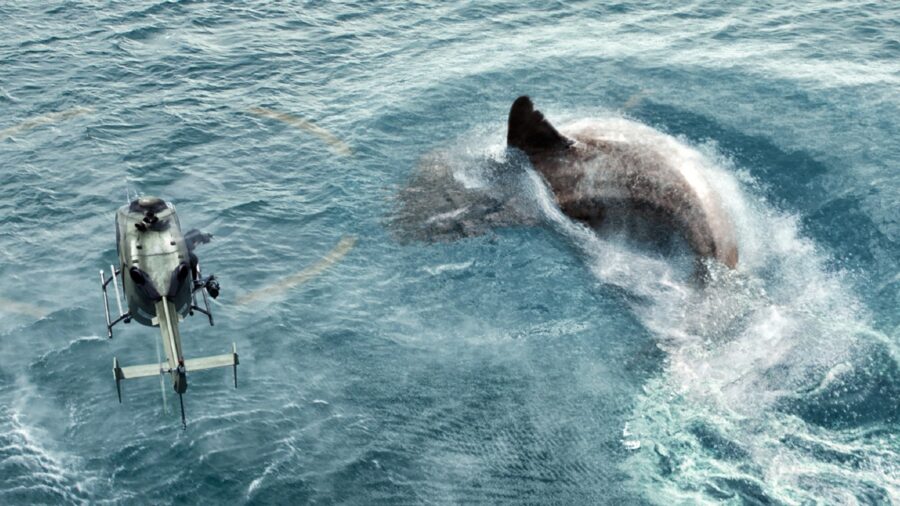Ancient Sea Monster Discovery Reveals Oldest Mega-Predator

Move over, megalodons. There’s a new group of ancient underwater killing machines in town, and they call themselves pliosaurs. Science Daily reports that researchers recently identified the remains of a 170-million-year-old aquatic reptile that existed during the Age of Dinosaurs as the oldest known mega-predator.
Pliosaurs were a group of reptilian ocean-dwellers closely related to the long-necked plesiosaur—think a brontosaurus with flippers instead of legs—that lived millions of years ago. A new study in the journal Scientific Reports sheds new light on the evolution of plesiosaurs from their stubby-necked cousins, the pliosaurs.
The fossils—found 40 years ago in north-eastern France—were recently analyzed by an international team of paleontologists from the Naturkunde-Museum Bielefeld in Germany, the Institute of Paleobiology of the Polish Academy of Sciences in Warsaw, Poland, the Natural History Museum in Luxembourg and The Museum of Evolution at Uppsala University in Sweden.
Once there was no more competition, the pliosaurs thrived.
Upon analysis, the group of researchers identified the remains as belonging to a new genus of pliosaurs: Lorrainosaurus.
Pilosaurs first appeared over 200 million years ago as a minor component of marine ecosystems of the time. Scientists knew that at some point, pliosaurs suddenly became giant apex predators but, prior to the new study, weren’t exactly sure what caused the pliosaurs to go from the whale sharks of the Jurassic Period to the equivalent of great whites.
Now, thanks to the Lorrainosaurus, scientists know the pliosaurs’ adaptive shift was a result of their food moving and the global decline of other predatory marine reptiles around 170 million years ago.
“Lorrainosaurus was one of the first truly huge pliosaurs. It gave rise to a dynasty of marine reptile mega-predators that ruled the oceans for around 80 million years.”
Sven Sachs, Naturkunde-Museum Bielefeld
In other words, once there was no more competition, the pliosaurs thrived.
Lorrainosaurus represents the oldest known large-bodied pilosaur with jaws over four feet long and filled with giant, conical teeth. Lorrainosaurus also had a bulky, “torpedo-shaped” body and used four flipper-like limbs to move around in its neverending quest for food. “Lorrainosaurus was one of the first truly huge pliosaurs. It gave rise to a dynasty of marine reptile mega-predators that ruled the oceans for around 80 million years,” explained Sven Sachs, a researcher at the Naturkunde-Museum Bielefeld.

The Lorrainosaurus brand of pliosaurs is thought to have reached close to 20 feet in length from snout to tail. The giant beasts lived during the early Middle Jurassic period, but other than that, not much is known about them. Thanks to the identification of Lorrainosuarus, however, one thing researchers do now know is that the pliosaurs as mega-predators first emerged following a “landmark. restructuring of marine predator ecosystems across the Early-to-Middle Jurassic boundary” between 175-171 million years ago.
Researchers recently identified the remains of a 170-million-year-old aquatic reptile known as the pliosaur that existed during the Age of Dinosaurs as the oldest known mega-predator.
Pliosaurs are thought to have been some of the most successful ocean-dwelling predators of their time. “They were ecological equivalents of today’s Killer whales and would have eaten a range of prey, including squid-like cephalopods, large fish, and other marine reptiles.” said senior co-author Benjamin Kear, Curator of Vertebrate Palaeontology and Researcher in Palaeontology at The Museum of Evolution, Uppsala University.
Kear went on to explain that all of those examples of prey for the pliosaurs have indeed been found preserved in the creature’s stomach contents.
“Lorrainosaurus is thus a critical addition to our knowledge of ancient marine reptiles from a time in the Age of Dinosaurs that has as yet been incompletely understood,” said Kear.











